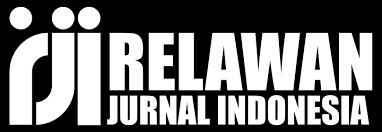Pengaruh Gaya Kepemimpinan Dan Lingkungan Kerja Nonfisik Terhadap Kinerja Karyawan Pada Toko Indomaret Area Pluit Jakarta Utara
DOI:
https://doi.org/10.61722/jiem.v3i11.7050Keywords:
LeadershipStyle, Non Physical Work Environment, Employee PerformanceAbstract
The purpose of this study is. To determine the influence of leadership style and non- physical work environment partially and simultaneously on employee performance at the Indomaret Store in Pluit Area, North Jakarta. This research method uses a quantitative descriptive method, data collection techniques using questionnaires. The population is 67 employees, sampling can use saturated sampling, so the sample is all employees totaling 67 employees. Data analysis uses validity test, reliability test, classical assumption test, multiple regression analysis, multiple correlation coefficient analysis, determination coefficient analysis and hypothesis test. From the table above, the results of the calculation of the t-test value of the Leadership Style variable (X1) with a t count of 8.353 and a significance of 0.000. It is said to be positive if the calculated t is greater than the t table (8.353 > 1.996) and the significance if it is less than (0.05 < 0.000) then Ha is accepted and H0 is rejected, it can be stated that Leadership Style (X1) partially has a significant effect on Employee Performance (Y) and produces an R Square value of 0.695 or 69.5% while the rest is 30.5%. Based on the results of the calculation of the Non-Physical Work Environment t test (X2) with a calculated t of 11.019 and a significance of 0.000. It is said to be positive if the calculated t is greater than the t table (11.019 > 1.996) and the significance if it is less than (0.05 < 0.000) then Ha is accepted and H0 is rejected, it can be stated that the Non-Physical Work Environment (X2) partially has a significant effect on Employee Performance (Y) and produces an R Square value of 0.780 or 78% while the rest is 22%. Based on the results above, namely the ANOVA test, the Fcount value is 272.155 while the Ftable ( 0.05) for n = 64 is 2.75. So Fcount> Ftable (0.05) or 272.155> 2.75, with a significant level of 0.000 because 0.000 <0.05, it can be said that Leadership Style (X1), Non-Physical Work Environment (X2) and together have an effect on Employee Performance (Y) and produce an R Square value of 0.895 or 89.5% while the rest is 10.5%.
References
Arikunto, Suharsimi. (2016). Prosedur Penelitian Suatu Pendekatan Praktik. Jakarta: Rineka Cipta.
Azwar. (2017). Metode Penelitian Psikologi. Yogyakarta: Pustaka Pelajar. Bintoro dan Daryanto. 2017. Manajemen Penilaian Kinerja Karyawan. Cetakan Yogyakarta: Gava Media.
Dessler, Gary. 2015. Human Resource Management, Tenth Edition. New Jersey: Prentice Hall.
Edison, Emron. Yohny Anwar, Imas komariyah. (2016). Manajemen Sumber Daya. Manusia. Bandung: Alfabeta.
Gaol, N. T. L. (2016) “Teori Stres: Stimulus, Respons, dan Transaksional,”. Buletin Psikologi, 24(1).
Ghillyer, A. W. (2016). Business Ethics Now 4th Edition. New York: McGraw- Hill.
Ghozali. (2016). Aplikasi Analisis Multivariete Dengan Program IBM SPSS. Semarang: Badan Penerbit Universitas Diponegoro.
Hamali. 2016. Pemahaman Sumber Daya Manusia. Yogyakarta: CAPS. Hamalik, Oemar. (2017). Kurikulum dan Pembelajaran. Bandung: Bumi Aksara. Hanggraeni, Dewi. 2016. Manajemen Sumber Daya Manusia. Jakarta: Lembaga Penerbit Fakultas Ekonomi Universitas Indonesia.
Hasibuan, Malayu S.P. 2016. Manajemen Sumber Daya Manusia. Edisi Revisi. Jakarta: Penerbit PT. Bumi Aksara.
. 2017. Manajemen Sumber Daya Manusia. Edisi Revisi. Jakarta: Bumi Aksara.
. 2018. Manajemen Sumber Daya Manusia. Jakarta: PT. Bumi Aksara.
Kasmir. 2016. Manajemen Sumber Daya Manusia (Teori dan Praktik). Depok: PT. Rajagrafindo Persada.
Mangkunegara, A. A. Anwar Prabu. 2016. Manajemen Sumber Daya Manusia. Perusahaan, Bandung: PT. Remaja Rosdakarya.
. (2017). Manajemen Sumber Daya Manusia Perusahaan, Bandung: Remaja Rosdakarya.
Mathis, R. L., and J. H. Jackson. 2016. Human Resource Management. Edisi 10 Jilid 3. Jakarta: Salemba Empat.
Nitisemito, A. (2016), Manajemen . Cetakan ke 9. Edisi ke 4. Jakarta: Ghalia Indonesia.
Rivai, Veithzal. el. at. 2016. Manajemen Sumber Daya Manusia Untuk Perusahaan dari Teori ke Praktik. Jakarta: Raja Grafindo Persada.
Sadili, 2016, Manajemen Sumber Daya Manusia, Bandung: Pustaka Jaya.
Sarinah, & Mardalena. (2017). Pengantar Manajemen. Yogyakarta: Deepublish. Sedarmayanti. 2017. Perencanaan dan Pengembangan SDM untuk Meningkatkan Kompetensi, Kinerja dan Produktivitas Kerja. Bandung: PT. Refika Aditama.
Sinambela, Lijan Poltak. 2016. Manajemen Sumber Daya Manusia: Membangun. Tim Kerja yang Solid untuk Meningkatkan Kinerja, Jakarta: Bumi Aksara.
. (2018). Manajemen Sumber Daya Manusia. Jakarta: PT. Bumi Aksara.
Sugiyono. (2017). Metodologi Penelitian Kuantitatif, Kualitatif dan R&D. Bandung: CV. Alfabeta.
. 2018. Metode Penelitian Kuantitatif, Kualitatif, dan R&D. Bandung: Alfabeta.
Sukirno, Sadono. (2016). Pengantar Teori Makro Ekonomi. Jakarta: Raja. Grafindo Persada.
Sutrisno, E. (2016), Manajemen Sumber Daya Manusia, Jakarta: Kencana Prenada Media Group.
. (2017). Manajemen Sumber Daya Manusia. Jakarta: Kencana.
Suwatno dan Donni Juni Priansa. 2016. Manajemen SDM dalam Organisasi Publik dan Bisnis. Bandung: Alfabeta.
Wahjono, Sentot Imam, Mondy dan Mondy 2015. Manajemen Sumber Daya Manusia. Jakarta: Salemba Empat.
Wibowo. (2017). Manajemen Kinerja. Edisi Kelima. Depok: PT. Raja Grafindo Persada.
Wibowo. 2016. Manajemen Kinerja. Jakarta: Rajawali Pers.
. 2017. Metodologi Penelitian Populer & Praktis. Jakarta: Rajawali Pers.
Wukir. (2013). Manajemen Sumber Daya Manusia dalam Organisasi Sekolah. Yogyakarta: Multi Presindo.
Downloads
Published
Issue
Section
License
Copyright (c) 2025 JURNAL ILMIAH EKONOMI DAN MANAJEMEN

This work is licensed under a Creative Commons Attribution-ShareAlike 4.0 International License.












